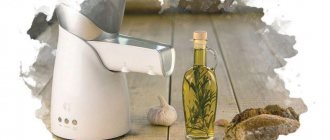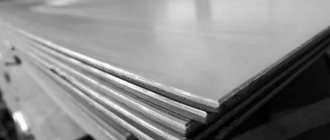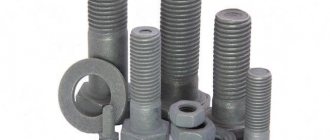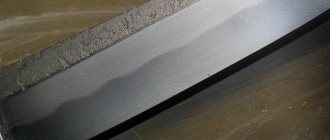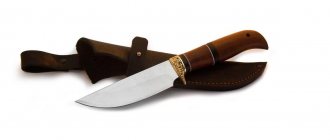Cast marble - what is it in simple words
Cast marble (in other words, cast marble or cast stone) is one of the types of artificial stone. It is a two-composite polymer material. Composition of cast marble:
• natural marble chips in quantities up to 95%. This percentage of crumbs is found in expensive bathtub models. Natural marble chips are ground to a fine state; • polyester resins bind the composition of synthetic components.
In addition, hardeners and dye pigments are added to the composition. The resulting sour cream-like mass is poured into molds specially made for casting.
First, the surface of the pre-prepared mold is treated with gelcoat, which is called, in other words, liquid glass. After hardening, the gelcoat becomes a decorative and protective layer of the bathtub surface.
How do you still choose a good bathtub made of cast marble?
The first thing a buyer pays attention to when choosing a bathtub made of cast marble is the price. It would seem that the high cost should guarantee the high quality of the product. However, in our case of choosing bathtubs made of cast marble, this is far from the case.
If the manufacturer’s goal is to obtain maximum profit, in this case, in addition to reducing the cost of manufactured products, the manufacturer may also inflate the cost of the finished product, presenting it as high-quality, since he understands that it is impossible to establish the absence of marble chips in the finished product when selling the product.
All the advice that is available on the Internet boils down to the following - buy bathtubs made of cast marble only from trusted manufacturers. But:
• firstly, unfortunately, there is no correct recipe for who should be considered proven; • secondly, the production of bathtubs from cast marble is not a complex process and does not require expensive equipment. Therefore, under the guise of a well-known, trusted brand, you can buy an ordinary fake, in no way distinguishable from the original, but consisting of quartz sand instead of natural marble chips.
Therefore, be extremely careful when choosing a bathtub made of cast marble.
Features of using bathtubs made of cast marble
Whichever way you go, bathtubs made from cast marble have a lot of advantages. A product made from this modern material can be a real find that will decorate the bathroom, giving the interior a very special sophistication and style.
But such bathtubs also have their own characteristics that you need to know in order for the product to serve for many years, pleasing the eye with its sophisticated appearance.
- It is important to remember that such a bathtub must be carefully looked after, as over time it can absorb dirt. It is recommended to clean it every time after use.
- Difficult transportation. Despite the strength of the material, transportation is associated with a number of risks, due to which the bath is susceptible to damage due to its rather large weight.
- The heavy weight of the bath can cause additional installation difficulties.
- Despite the strength, strong point loads on the bathtub area can lead to chips or cracks.
- When purchasing a bathtub of an unusual shape and size, you should think about the water supply in advance so that no additional problems arise during installation.
Bathtubs made of cast marble - pros and cons from A to Z. What do you need to know?
For a complete understanding, you also need to familiarize yourself with all the properties of bathtubs made of cast marble. Bathtubs made of cast marble - pros and cons, all the advantages and disadvantages of bathtubs made of cast marble:
1) advantages of a bathtub made of cast marble: • a large selection of bathtubs in shapes, colors and sizes depending on customer requests - rectangular, oval, symmetrical, corner, asymmetrical. Hydromassage, phototherapy, armrests, headrests, drain-overflow, mixer and shower head holder are easily built in; • beautiful and aesthetic appearance and design. Products produced using injection molding imitate natural stone; • simple installation method - the bathtub stands well and does not wobble on ordinary legs; • strength, wear resistance and durability; • good sound insulation due to the high density and weight of the product; • dielectric properties; • low coefficient of thermal conductivity, the water in such a bath does not cool down for a long time; • hypoallergenicity. Cast marble does not cause allergies in either people or animals; • increased antibacterial properties due to the absence of micropores in the surface. Thanks to this, various bacteria and microorganisms cannot collect and multiply on the surface of the bath; • maintainability – chips and scratches can be removed by grinding, applying a protective layer and polishing; • caring for the coating of a bathtub made of cast marble is easy and straightforward.
2) disadvantages of a bathtub made of cast marble: • the cost of products made of cast marble is more expensive than products made of other materials; • it is necessary to take into account that the large weight of bathtubs made of cast marble creates certain difficulties associated with loading, delivery, lifting to the floor and installation; • use of special cleaning products to care for the bathroom; • gelcoat is not resistant to household chemicals and dyes. Therefore, it is not recommended to use colored aromatic products, wash clothes, and so on; • gelcoat is not resistant to high temperatures. The surface is afraid of very hot objects; • during the operation of the bathtub, chips often appear on the surface from impacts of various heavy objects. At the same time, we must not forget that gelcoat is liquid glass that can be easily scratched; • although bathtubs made of cast marble have a certain strength, we should not forget that the composition of any high-quality bathtub still contains at least 5% of polyester resins, which are binding and turn into plastic as a result of hardening. But any plastic, including the highest quality, begins to lose its properties after 10 years. In addition, products from unscrupulous manufacturers are present on the market in sufficient quantities. Therefore, what can be said about inexpensive products made from cast marble, in which the percentage of polyester resins is much more than 5% or there are no marble chips at all, and instead quartz sand is added to the composition? As they say, no comments!
Features of bathtubs made of cast marble: how to choose the right one?
Marble chips form the basis of all our products.
It is mixed with polyester resin, made in Europe, in special proportions, verified over years of production. The resulting mixture is poured into a mold (product matrix). The outer layer of our products is gelcoat, a gel-like composition used to create a decorative and protective coating for plumbing products.
WE COMPARE MARBLE, STEEL, ACRYLIC AND CAST IRON BATHTUBES
When starting a bathroom renovation, you need to determine the location of the bathtub, its shape, dimensions and installation method. But before choosing from a variety of models, it is worth deciding what material the bathtub will be made of - cast iron, steel, acrylic or cast (cast) marble.
Cast iron bathtubs are familiar to everyone, as are the black chips on their surfaces. This is due to the fact that the enamel is applied to a ready-made cast iron mold. Some manufacturers still practice hand coating with an enamel thickness of 0.8 to 1.2 millimeters, which wears off over time. And this devalues all the advantages of cast iron itself - stability, low thermal conductivity, lack of resonance when water flows. The disadvantages of cast iron bathtubs include limited shape, significant weight, and difficulties in installing hydromassage.
Steel bathtubs are a little more expensive, five times lighter than cast iron, but thinner-walled. Enameling a steel mold is done at high temperatures, so the enamel is literally baked onto the metal. But when thin walls are deformed, it cracks and crumbles. Low noise absorption forces the owners of these baths to build entire podiums, covering them with tiles. But there are much more models on the market.
Acrylic bathtubs and liners gave rise to a real renovation boom several years ago, when happy owners shelled out large sums for this silent, non-slip material that comes in a variety of shapes. Only over time, the exclusively white bathtubs turned yellow, absorbed dyes, and also lost the smoothness of the surfaces due to the formation of chips and roughness. On the plus side, such bathtubs are light, ergonomic and can easily be equipped with a hydromassage function. But the most sophisticated devices cannot work in such a bathtub with full efficiency precisely because of its lightness.
Nowadays, in the production of high-quality bathtubs, artificial stone is used, its properties superior to natural ones. This is a composite composition in which 80% is specially prepared marble chips, and 20% are pigments and binders. The material is called “cast marble” and is four times stronger than natural marble. A bathtub made of cast marble consists entirely of a composite, which means that the surface layer will not wear off over time and will not change its color. When cast marble is exposed to dyes (hair dyes, fabrics with unstable colors), stains are formed that can be removed with an acidic environment - for example, wipe with a lemon cut. You should not use abrasives - artificial stone, like any natural stone, is additionally polished to achieve a smooth surface. The higher the polish, the more respectable the bathtub looks, but the easier it is to scratch.
The advantages of bathtubs and sinks made of cast marble include a whole list of characteristics:
- stability (for the installation of some models it is necessary to use the supports provided by the designers);
- variety of styles and forms (from classic to ultra-modern);
- the ability to choose rich monochrome shades or stylize the textures of natural stones;
- absence of vibration, as a result – a high level of noise absorption and optimal operation of hydromassage devices;
- maintainability (restoration of damaged surfaces is theoretically carried out by specialists, but in practice the need for such a service is close to zero);
- increased resistance to liquid aggressive media when using gelcoat for finishing the bathtub;
- low thermal conductivity (baths made of cast marble retain a comfortable water temperature for a long time).
Unlike cold natural stones, cast marble is very comfortable to the touch. But the most pleasant bonus is that with the help of a bathtub made of such material it is easy to compensate for the flaws of the design and construction work (within reasonable limits) - if the bathtub has sides that do not fit into the allotted space, then they can be trimmed using special tools right at the installation site. Naturally, we are talking about those ends that should be adjacent to the walls of the room.
The only drawback of such bathtubs is that they are not budget-friendly. But the list of benefits is clearly worth it.
Why are the prices for bathtubs made of cast marble so different?
Let's start with the fact that if you were thinking about buying a bathtub made of cast marble, you most likely visited many stores and online stores. You could see that there are a huge number of manufacturers, and prices for similar bathtub models can differ by hundreds of thousands!
Why is that? What's the matter?
We ourselves have been a manufacturer of cast marble products for 7 years, and our main product is bathtubs. Therefore, I would like to clarify for all buyers the real reason for such a difference in prices.
Different material. For the most part, manufacturers use 2 types of materials for their products: natural marble chips or quartz sand, which is much cheaper than the first. As a result, the strength and durability of the product are completely different. Often, quartz sand baths have a warranty of 2 to 5 years. We believe that this guarantee is too short, since the products are not durable, and the bathtub is purchased for a period much longer than the guarantee is given.
Which bathtubs made of cast marble will not last you more than 10 years?
Therefore, a bathtub made of cast marble can serve you as long as the plastic it contains retains its properties.
It should be noted that the same service life is 10 years for a high-quality acrylic coating applied to the surface of an old bathtub using the pouring method. In addition to the popular method of restoring bathtubs with acrylic, recently such a method of restoring bathtubs as restoring a bathtub with cast marble has become increasingly popular.
However, the cost of restoring a bathtub with cast marble is several times less than the cost of a bathtub made of cast marble made by injection molding.
Don't throw away your old bathtub! You will always have time to throw it away. Restore it with cast marble!
Restoring a bathtub with cast marble is a process through which, at minimal financial cost, in the shortest possible time you will receive a completely new bathtub with a shiny, impact-resistant glossy finish.
For the restoration of old cast iron and steel bathtubs, a premium two-composite polymer material is used, specially designed for restoring the surface of plumbing products.
There is no liquid glass gelcoat in the composition of cast marble for the restoration of bathtubs, therefore, bathtubs restored with cast marble are free from such disadvantages of cast marble bathtubs made by injection molding, which are associated with the weak properties of gelcoat.
Due to the presence of a fine fraction in the marble chips, this material has good adhesion and excellent performance properties: cast marble for bathroom restoration is hypoallergenic, non-toxic, impact-resistant, abrasion- and scratch-resistant. The coating can withstand the impact of a hammer thrown from a height of 1 m.
Due to the low coefficient of thermal conductivity, a bathtub covered with cast marble retains the heat of hot water for a long time. The surface is warm and pleasant to the touch. The vibration that occurs when using hydromassage is well absorbed by the polyester resins included in the coating.
Thanks to the high noise absorption coefficient, the bathtub covered with cast marble reduces the level of water noise, which makes taking water procedures more pleasant and comfortable. Improved composition and special additives make cast marble more resistant to aggressive chemical compounds.
There are no micropores in the coating, as a result of which cast marble has excellent antibacterial properties. Due to the absence of micropores, microbes and bacteria have nowhere to accumulate.
Bathtubs restored with cast marble require minimal maintenance. The adhesive properties of the material guarantee 15 years of operation, since the coating will adhere even to metal with pockets of rust. Experts estimate the service life of such coating from 15 to 25 years.
Pros and cons of cast marble
Cast marble bathtubs have both a number of positive and negative qualities, but first things first. Let's start with the positive properties, since there are many more of them:
- Bathrooms made of cast marble are particularly durable and are practically not subject to chips and scratches on the surface. Of course, this indicator is relative, because if you deliberately hold a nail or any other metal object on the surface, you will of course damage it, but with normal use the surface will remain pristine for a very long time;
- Thanks to the use of various fillers and additives, a marble bathtub can imitate in its color almost any type of material, including natural stones;
- Since the material for making bathtubs is very plastic, it allows you to create products of almost any shape. These can be both classic products and corner marble baths, as well as round, semicircular, oval or generally multifaceted designs;
- Another undoubted quality that casting baths have is the complete absence of vibration and noise. Even when drawing water into the bath there is no sound;
- In terms of its characteristics, a pseudo-marble bathtub is in no way inferior to acrylic products and also retains heat well. Therefore, the collected water will remain hot for a long time;
- Another positive characteristic is the simple repair of bathtubs made of cast marble.
If we compare cast bathtubs with other types of sanitary ware, we can conclude that these products are practically in no way inferior to acrylic ones and are even superior to them in some ways.
Now it’s worth considering cast bathtubs from the negative side:
- Despite all the positive properties, a bathtub made of artificial marble is a very whimsical and delicate material that should be carefully looked after. Therefore, cleaning should only be done with mild detergents and sponges;
Important! Under no circumstances should abrasive agents or those containing aggressive components be used for a cast bath.
- Strange as it may seem, a cast marble bathtub does not tolerate prolonged contact with water. That is, after taking water procedures, a prerequisite is the complete removal of liquid, otherwise the remaining water and the salts contained in it can ruin the appearance of the bath. Namely, an indelible stain forms on the surface;
- Heavy objects should not be dropped onto regular and corner bathtubs made of cast marble. Since an impact on the surface can result in a fairly large chip or, in general, a through hole. This can be eliminated, but it is a waste of nerves, money and time;
- And, probably, the most important disadvantage that a cast marble bathroom has is the high cost of the product.
Conclusion: Having studied these characteristics, we can conclude that a bathtub made of marble chips is “worth the money.” After all, with proper care and respect, the product will easily last for decades and will not lose its appearance.
All the pros and cons of restoring a bathtub with cast marble
Preparing a bathtub for restoration with cast marble
In the process of preparing a bathtub for restoration, the bathtub is first cleaned of cement mortar, limescale, rust, silicone sealant and glue. If the bathtub has been painted before, all remnants of the old paint must be removed.
Using a special chemical solution, the surface of the bath is cleaned of fat and other organic compounds. The cleaned and treated surface of the bathtub is washed well and then dried. The surface of the bath must be dry and clean. After this, the plumbing is removed, in simple words - drain and overflow.
Covering the bathtub surface with cast marble
The surface of the bath is degreased using a special degreaser. The two-composite material is mixed well with the hardener for 10 minutes until a homogeneous sour cream-like mass is obtained.
The prepared composition is applied to a clean and degreased surface of the bathtub using the “pouring bath” method. Flowing down the walls of the bath, the material forms a thick and smooth glossy coating. The time it takes to restore a bathtub with cast marble is 2-3 hours.
Complete drying time – 36 hours. Once cured, cast marble forms a durable, long-lasting, shiny, glossy finish. After this, the elements of the drainage system are installed back - drain and overflow.
Pros and cons of restoring a bathtub with cast marble:
• neat and aesthetic appearance of the cast marble coating; • low thermal conductivity coefficient ensures longer retention of hot water temperature. The surface of the bath is warm to the touch; • thanks to the improved composition, increased wear resistance of the product covered with cast marble; • cast marble has a bright white color, which can be tinted to obtain a coating of different colors; • damaged areas of the bathtub surface can be easily restored independently at home using repair kits for bathtubs; • high level of vibration and noise absorption; • does not turn yellow over time; • high antibacterial properties due to the absence of micropores in the coating; • cast marble is neutral to the effects of chemical compounds; • material is an excellent dielectric due to its good insulating properties; • cast marble can withstand temperature changes from -5ºС to +80ºС; • impact-resistant glossy surface.
As a result of the cast marble bathtub restoration process, your bathtub will receive a shiny new cast marble finish that is guaranteed to last longer than its injection molded counterparts. And at the same time, you will save a lot of time and effort, as well as a significant amount of financial resources from your budget, by reading the article: bathtubs made of cast marble - pros and cons.
Comparative characteristics of natural and cast marble
| Ud.meas. | Natural marble | Cast marble |
| Compressive Strength | MPa | 41-62 | 70-120 |
| Density | kg/m3 | 2700-2900 | 18000-2200 |
| Abrasion | g/cm3 | 0,57 | 0,44 |
| Static load | kg | 120 | 350 |
| Water absorption | % | 1 | <1 |
| Frost resistance | cycle | 50 | up to 300 |
A proven method - how to clean a bathtub made of cast marble?
Daily care of the surface of a bathtub made of cast marble consists of simply wiping the surface of the bathtub with a dry cloth after completing water procedures. Once a week or two, depending on the intensity of use of the bathtub, its surface must be treated with a mild cream or gel detergent that does not contain abrasives (for example, Cif).
Then rinse off the product with warm water and wipe the surface of the bathtub dry with a dry cloth. As you can see, care is quite simple and does not require much time and effort.
Other related articles:
- Restoring a bathtub with liquid acrylic: reviews, expert advice and prices for bathtub restoration
- Which bathtub is better – acrylic or steel? Reviews from experts
- Should you restore an old cast iron bathtub or buy a new one - 5 expert tips
- Do-it-yourself repair of cast-iron bathtubs with enamel from A to Z – 5 video reviews and 5 secrets of professionals
- How you can paint the inside of a cast iron bathtub at home - 5 secrets of experts
- What is better, an acrylic insert in the bathtub or a liquid acrylic coating? Comparison of characteristics and 5 expert tips
- Restoration of bathtubs with liquid acrylic in Moscow and the region - the best prices and experts!
- Why does an acrylic bathtub turn yellow - what should I do? 10 expert tips
- How to care for an acrylic bathtub and what to clean it with at home?
Advantages and disadvantages of bathtubs made of cast marble
Before you make a purchase, you should familiarize yourself with the advantages of the models and their disadvantages. In this case, it is worth relying on reviews from consumers who have already purchased such baths.
Advantages of using bathtubs made of cast marble
- Strength. If the bathroom is equipped with plumbing fixtures made of cast marble, then the owners can count on its long service life. In terms of strength, cast marble is not inferior to natural stone.
Advice! It must be said that strength is inherent only in high-quality products. If the production technology is violated, then it will be impossible to vouch for the strength of the bathtub. It is precisely these bathtubs, manufactured in violation of technology, that are prone to the formation of cracks and chips. In most cases, negative reviews about bathtubs made of cast marble are due to the fact that the plumbing was of poor quality. Therefore, when deciding on this expensive purchase, you should only contact reliable stores and choose bathtubs from well-known brands.
- Models of plumbing fixtures made of cast marble perfectly inhibit vibration, so hydromassage bathtubs made of this material are better than acrylic ones, in which vibration during hydromassage procedures can be felt quite strongly.



